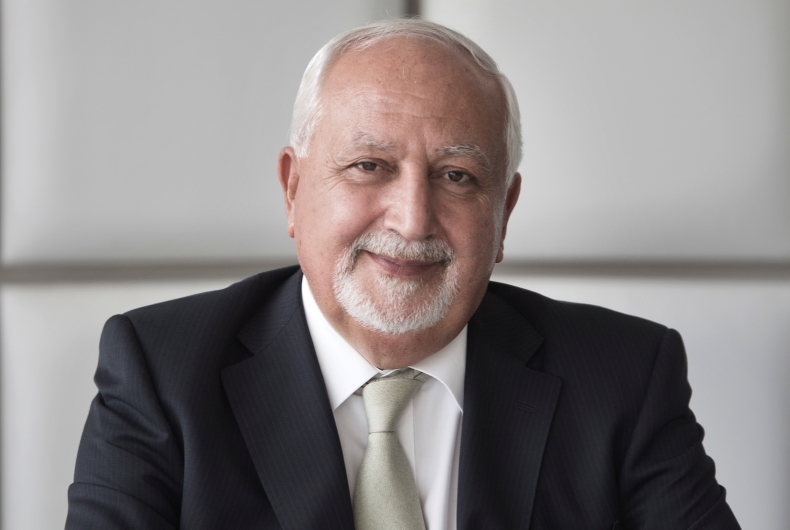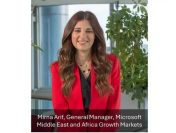 It is now a given that 2017 and 2018 are going to be two of the toughest years for the marketing fraternity in the Middle East & North Africa (MENA) region. Reasserting this, data from Ipsos Stat indicates a 22-30 percent drop in advertising spends in measured media among the largest markets of the region. Breaking down the various components leading to this drop, Ramzi Raad, Group Chairman, TBWA\RAAD, calls for a shift in mindset and a change in approach that can fortify the region to face the challenges ahead.
It is now a given that 2017 and 2018 are going to be two of the toughest years for the marketing fraternity in the Middle East & North Africa (MENA) region. Reasserting this, data from Ipsos Stat indicates a 22-30 percent drop in advertising spends in measured media among the largest markets of the region. Breaking down the various components leading to this drop, Ramzi Raad, Group Chairman, TBWA\RAAD, calls for a shift in mindset and a change in approach that can fortify the region to face the challenges ahead.
Crumbling Cookie
At present, numbers paint a grave picture for MENA. Saudi Arabia that should have led the region is looking at a near 30 percent drop in measured media. For over a decade now, the Kingdom has not been able to occupy the top slot that it had once claimed. This poses concern because given the sheer size of Saudi Arabia, its contribution to overall ad spends is critical in creating an upward momentum.
As Saudi battles the decline trend, the case for UAE is not too different either. A silver lining of sorts is that both markets are expected to show growth in at least TV ad spends. The Pan Arab media cluster, where both TV and press are slated to see a slump, is preparing for a 22 percent decline this year. Mr Raad explains that this drop is in line with the Arab market trends.
| COUNTRY | MEDIA | 2016 (Jan-Mar) | 2017 (Jan-Mar) | Diff % |
|---|---|---|---|---|
| Source: Ipsos Stat - Measured Media, in USD | ||||
| Bahrain | TV | 1449904 | 2487319 | 71.55% |
| Press | 30052353 | 26726283 | -11.06% | |
| Outdoor | 1160739 | NA | ||
| BAHRAIN Total | 32662996 | 29213602 | -10.56% | |
| KSA | TV | 8275326 | 15467486 | 86.91% |
| Press | 166211718 | 121388881 | -26.96% | |
| Radio | 67495599 | 48840307 | -27.63% | |
| Outdoor | 71312843 | 34353521 | -51.82% | |
| KSA Total | 313295487 | 220050195 | -29.76% | |
| Kuwait | TV | 19430438 | 15251773 | -21.50% |
| Press | 88996513 | 64367215 | -27.67% | |
| Radio | 5734892 | 3882611 | -32.29% | |
| Outdoor | 29451138 | 26251886 | -10.86% | |
| KUWAIT Total | 143612982 | 109753485 | -23.57% | |
| Oman | TV | 2131065 | 2141106 | 0.47% |
| Press | 43841083 | 32889250 | -24.98% | |
| OMAN Total | 45972148 | 35030357 | -23.8% | |
| Pan Arab | TV | 2145643942 | 1671591943 | -22.09% |
| Press | 39827033 | 28005566 | -29.68% | |
| PAN ARAB Total | 2185470975 | 1699597509 | -22.23% | |
| Qatar | TV | 8680135 | 8006381 | -7.76% |
| Press | 52794045 | 49030391 | -7.12% | |
| Outdoor | 20704368 | 13305305 | -35.74% | |
| QATAR Total | 82178548 | 70342077 | -14.4% | |
| UAE | TV | 31486287 | 33907057 | 7.69% |
| Press | 222096089 | 161801355 | -27.15% | |
| Radio | 76839387 | 78932106 | 2.72% | |
| Outdoor | 177519157 | 106131538 | -40.21% | |
| Cinema | 19003983 | 11233296 | -40.8% | |
| UAE Total | 526944904 | 392005351 | -25.61% |
As is known, the Pan Arab term is used for media that provides regional content catering to more than one market. Historically, the term was coined for media that was broadcast or published outside Saudi Arabia but had the highest consumption within the Kingdom.
“This was initially devised to avoid Saudi censorship but today this definition has become fluid as terrestrial TV is replaced largely by satellite, crossing country boundaries,” explains Mr Raad. The Pan Arab TV cluster continues to be important as it includes the likes of Al Arabiya, MBC beIN and Al Jazeera, which are owned by Saudi and Qatari interests.
What Gives
Putting the numbers in perspective, the most obvious reasons for the declining ad spends are the economic and political climate in the region. Mr Raad reminds that MENA cannot escape the ripples of global challenges. The year 2016 was specifically disappointing in that context as none of the expected additional ad revenues kicked in.
Olympics faced issues ranging from country participation to virus outbreak. The US Presidential Elections did not maintain conventional ad budgets as Trump’s cancellation of his planned TV campaign broke every known campaigning norm. The uncertainty around Brexit and finally the kneejerk reactions of global advertisers reducing annual plans to monthly releases, created one giant hit on regional ad revenues.
While the combination of these international factors, and their impact, is one big trigger to dropping ad spends, the second is MENA’s internal struggles where the region has lost contribution from critical markets.
“We are on mercy of the environment around us. This has been the region’s destiny. In September 2009, Egypt became the largest ad market in the Arab world but in early 2010, the Arab Spring broke out. This was followed by the war in Yemen, and the tragic losses in Syria. Iraq and Libya are impacted. From 14 active markets in the region, we are losing one market after another,” Mr Raad points out.
Another trend that has played a part in the disservice to advertising sector is the rampant pitch processes, the role of procurement and businesses seldom changing hands in markets such as Saudi Arabia and Qatar. While various global markets have seen their share of similar challenges, in many cases digital has delivered.
The Digital Conundrum
Globally, the year 2016 continued the digital growth story. In some markets, such as the US, digital surpassed legacy media. It boosted overall spends in markets such as the UK. Markets like India have seen nearly a 43 percent rise in digital advertising. Google and Facebook are dominant players in the mix, and both tech giants have thriving businesses in MENA too.
Digital media spend is on the rise in MENA but the lack of industry metrics has been a setback. “We do not have any published statistics to quantify this but we know that digital spend is on the increase. For large part, we understand this because we live in the market. From the sheer increase in online inventory to the interactions that we have with our clients, we know that digital ad spend is growing,” Mr Raad asserts.
The good news is that digital statistics are expected to be published for the first time this year, which will allow us to make more intelligent assumptions.
Make The Move
The promise of digital is one positive aspect. Mr Raad however urges that the more important step is for the industry to shift its mindset of treating advertising as a cost, to considering it as an investment. “Gulf governments, and the GCC business community, need to realize that advertising is an investment and a dynamic tool that should continue to be utilized in periods of crisis. They have to stop treating advertising as the expense that must be curtailed every time the going gets tough,” Mr Raad advises.
Given that this culture seems to be the norm in most markets of the region, there is a clear need to educate. While efforts from the industry have been trained in that direction, very little action has taken place. “The IAA, Gulf Association of Ad Agencies and the likes have tried in the past but it has not yet augured desired results on ground. In a sense, we missed the opportunity but we still dream to bring change. A collective effort has to be made,” he says.
Mr Raad’s call is not just to agencies but to all stakeholders of the marketing ecosystem – including media, research agencies, local representatives and offices of global spenders – that are required to work in tandem to drive this change.
On what is his expectation for 2018 is, Mr Raad concludes, “It largely depends on the political climate that seems to be getting cloudier. But I do hope that it will be a better year.”




